Bull Shoals Lake, Arkansas (photo credit: Andrew Benefield on Unsplash)
How Much Does it Cost to Live the FIRE Life in Arkansas?
Hello, and welcome to interview #11 in the How Much Does it Cost to Live the FIRE Life interview series! Part interview, part spending report, this series will introduce us to FIRE* seekers from all over the world.
They’ll reveal their essential spending and money-saving tips—all to help us learn new ways to save on our own expenses. As a bonus, we’ll also get to discover the unique advantages and challenges of living in different places around the globe.
*FIRE stands for financial independence, retire early. It’s also known as FI—financial independence. For more info, see my FI School series—it’ll teach you everything you need to know about FI (and FIRE).
About the interview series
I created an intro page for this interview series to help explain what it’s about, what’s included (or not) and why. I’ll also link to all the interviews from the intro page—so check back there to see the entire collection.
Jump to the series intro: How Much Does it Cost to Live the FIRE Life? (The Interview Series)
Disclosure: These interviews may include affiliate links. That means I’ll receive a commission if you make a purchase through my links—at no extra cost to you. Thank you!
Interview #11: Steve from Southern Arkansas
In today’s interview, we’ll meet Steve from the Steveark blog. Steve is my first interviewee who has already reached full FIRE (and is actually at Fat FIRE)! He and his wife live in a small town in Southern Arkansas and have three millennial-aged children.
Steve retired ‘slightly early’ five years ago when he shifted to part-time consulting. He recently shut that business down and is now fully retired! Note: Steve filled out this interview a while back—before he fully retired.
About Steveark
Through this series, one of the fun things for me is discovering new (to me) blogs—and that includes Steve’s. I’d seen his Steveark handle in the comments section of other blogs, but had never actually visited his site. I’m so glad I finally did!
I love Steve’s down-to-earth musings and observations as an older, Baby Boomer FIREee. I can’t put my finger on what it is that I enjoy so much about his blog… I just find his perspective on FIRE and life to be very soothing and reassuring.
If you haven’t visited Steveark yet, I highly recommend that you do. But before you do, stick around and read through Steve’s interview. While his lifestyle costs more than the typical FIREee’s, based on how much wealth they’ve amassed, their spending is comparatively frugal!
Take a look at his numbers and let me know in the comments what you think.
Table of Contents
Part 1
Part 2
Part 3
Part 4
Part 1: Getting to know you
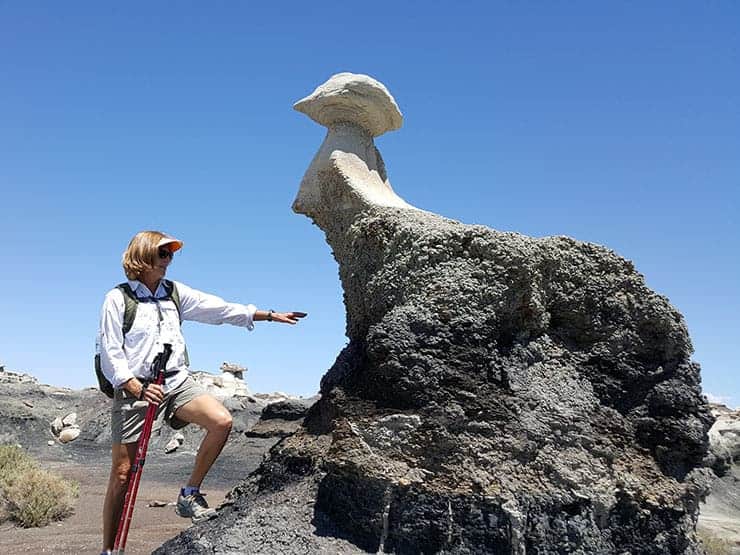
Tell us about you and your wife
We retired five years ago when I turned 60, that’s not very FIRE but I enjoyed my job until then so I worked much longer than I needed to financially.
Where are you in your journey to FIRE?
Retired for five years, I’ve consulted during the time about a day a week but the money earned is not needed. I just did it for fun but I’m shutting that down to volunteer more next month.
What type of FIRE are you aiming for? (FIRE, Lean FIRE, or Fat FIRE*)
How Chrissy defines FIRE, Lean FIRE, and Fat FIRE
Some people define Lean FIRE as under $40k in annual spending; FIRE as $40–$100k in annual spending; and Fat FIRE as $100k+ in annual spending.
However, I prefer looser definitions that are not based on hard numbers. That’s because $100k could be Fat FIRE in a small Canadian town but Lean FIRE in San Francisco. That said, here are my definitions:
- Lean FIRE: The essentials with little or no discretionary spending.
- FIRE: The essentials plus a comfortable amount of discretionary spending.
- Fat FIRE: The essentials plus a luxurious amount of discretionary spending.
Our FIRE funding is very fat, we could spend around $250K annually if we wanted to, but choose to spend less than half of what we are funded for. But we are happy and see no reason to spend excessively when we are happy spending what we do now.
Tell us about your living situation
We have a 2,850 square foot two-story house with four bedrooms and four full bathrooms. It is the only house we’ve ever owned and we’ve lived in it for 40 years. It has been paid-for for probably about twenty years now.
Why did you choose to live in Southern Arkansas?
I had a choice of eight job offers when I graduated college, all over the country, but I had interned here and saw lots of room for advancement. So I came to small-town Arkansas, my home state.
Part 2: The expenses
In this section, Steve shares his essential expenses and best money-saving tips. But before we get started, let’s review some important notes:
Important notes about the numbers
- Only essential expenses are included.
- Discretionary expenses (e.g. travel, gifts, etc.) are not included.
- Expenses are rounded to the nearest dollar.
- Expenses are displayed in the interviewee’s home currency.
- In this interview, the home currency is US dollars.
- For your convenience, I’ve included a currency converter for each expense.
For detailed explanations about which expenses are included (or not) see my How Much Does it Cost to Live the FIRE Life intro post.
1. How much does housing cost in Southern Arkansas?
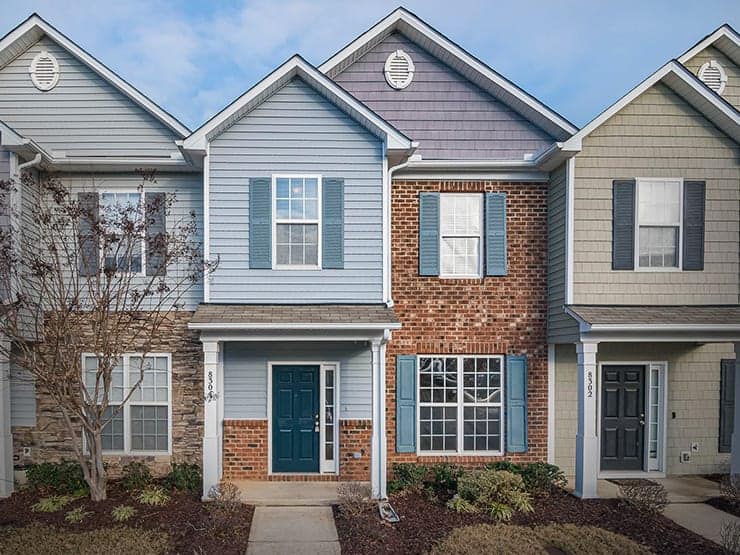
Mortgage ($0) 
We bought a small 1,440 square foot house for about one year’s gross combined pay. Over time we added on with cash renovations, additions and modernizations. We’ve done nine of them and the house has doubled in size. We had three teenagers under our roof at the same time—that’s why we had four bedrooms each with a full bathroom. That minimized family drama!
The nice thing about small-town life is we have 800 acres of wooded wetlands around our house and every bird and animal you can imagine to watch while we eat breakfast. But in spite of the quiet and seclusion, I was never more than eight minutes from work. So no real commute.
Property tax ($133/month; $1,599/year) 
They are really low in rural Arkansas. Another nice thing but we do have an income tax.
Strata/HOA fees ($0) 
These don’t exist here.
Home insurance ($265/month; $3,176/year) 
Ours looks a little high but we are paying nearly $700 extra to have several million in umbrella coverage added to it for liability protection of our sizable assets.
Home maintenance ($50/month; $599/year) 
This category includes: home maintenance, repairs, cleaning, and improvements; household goods and supplies; furniture; and appliances.
We had virtually no repairs last year, but this year we’ll have a $15,000 insurance replacement of a 20-year-old roof. Surprisingly, the insurance will cover the whole amount, zero out of pocket to us!
Home equity opportunity cost ($13,700/year) 
About the home equity opportunity cost ‘expense’
This category was suggested by The Economist from FI Garage. The intention for sharing this is to calculate the opportunity cost of home ownership versus renting.
In other words: if you invested the amount that’s tied up in your home equity, how much would that be worth after one year of investing (based on a conservative 5% return)?
Our home is completely paid off. Zestimate puts it at $274K.
$274,000 x 5% = $13,700 in opportunity cost after one year of investing.
2. How much does transportation cost in Southern Arkansas?

Vehicle insurance ($142/month; $1,700/year) 
We have three vehicles between the two of us. We drive 25,000 miles a year. A lot is recreational. For instance, I’ll drive 230 miles tomorrow to play a team tennis match, we both play on multiple teams and all the matches are in different cities. But we can’t find enough competition locally, so we have to drive to find quality opponents.
We also pull our boat to lakes to fish, sometimes take it 300 miles to the coast. So we have one SUV for towing things and each have a smaller vehicle for driving. We often are both on the road hundreds of miles apart, so sharing a car doesn’t work.
Gas ($260/month; $3,125/year) 
Based on our mileage, it’s a bunch!
Vehicle maintenance ($265/month; $3,180/year) 
We had tires and since our cars were a 2006, a 2008 and a 2011, we always have some repairs.
Bike maintenance ($0) 
No bikes, we are runners.
Parking and tolls ($0) 
What are parking and tolls? That stuff is all free here.
Transit ($0) 
You are kidding, right? There is no public transit around here, hence all the cars.
3. How much does food cost in Southern Arkansas?

Groceries ($325/month; $3,900/year) 
We are light eaters, so our grocery bills are not high. Plus we don’t eat out much Covid or no Covid. Fortunately, you did not require us to disclose our wine bill, that’s astronomical, but it is discretionary so we aren’t telling!
Related reading: How to Save Money on Groceries (36 Valuable Tips) and Detailed Flashfood Review (Groceries for 50-70% Off)
Eating out ($175/month; $2,100/year) 
That requires restaurants, few and far between around here. I do eat out on my consulting expense account quite a bit (or I will until next month) but that is free to me.
4. How much do utilities and bills cost in Southern Arkansas?
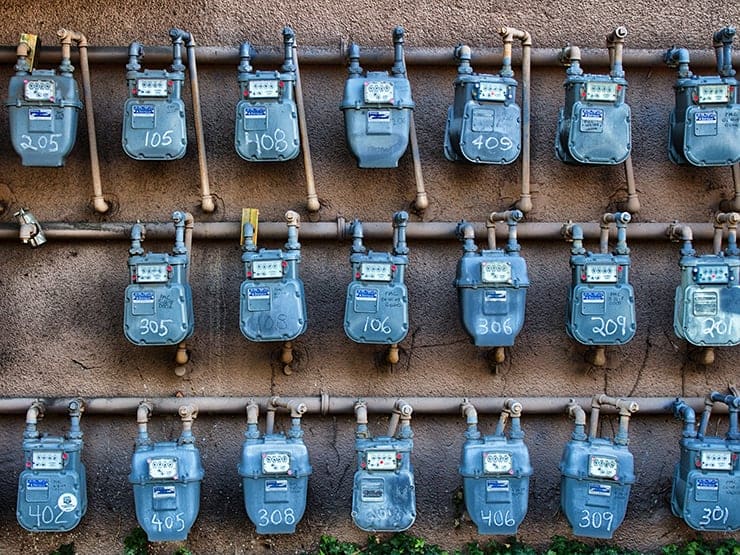
Natural gas ($20/month; $246/year) 
We only have upstairs heat and one water heater on gas, so the bill is small. We don’t heat upstairs much. My home office is in a loft overlooking the family room so it doesn’t need much heating.
Electricity ($239/month; $2,870/year) 
That’s kind of big because we only have two seasons—hot and cold. And the main house heat and air conditioning are from electric heat pumps, two of them.
Water ($27/month; $324/year) 
That’s pretty cheap around here, there is an abundant supply.
Garbage and recycling ($6/month; $72/year) 
That is bundled in with the water, but I guessed to split it out. Again it is pretty much very inexpensive.
Internet ($238/month; $2,853/year) 
That is pretty high but it includes cable and I did not separate it out because I didn’t know how.
Home phone ($10/month; $120/year) 
That’s bundled too but I pulled it out because I knew what it cost.
Cell phones ($159/month; $1,909/year) 
My ridiculous $1,300 Galaxy smartphone and crazy expensive unlimited everything plus tethering plan was paid for by my consulting clients so I only show my wife’s phone. She has two of our daughters still on it though, so that’s why it is as high as it is. That’s the only money we still spend for our kids on a regular basis. They are fully self-sufficient. Our son took himself off her plan as a matter of principle. He’s very self-reliant.
Streaming entertainment ($21/month; $248/year) 
We have a lot. Hulu, Netflix, Amazon Prime and HBO max. The HBO comes with my wife’s cell plan but we pay for the rest.
5. How much do other essentials cost in Southern Arkansas?

Life and disability insurance ($322/month; $3,866/year) 
Don’t need disability since we don’t work and we don’t need life but I included it because my wife still has term life on me.
Medical insurance ($1,329/month; $15,945/year) 
That was expensive as you can see.
Out-of-pocket medical expenses ($934/month; $11,203/year) 
I had a significant illness last year so this was a particularly high year.
Clothing and footwear ($150/month; $1,800/year) 
We don’t buy much in the way of clothing and when we do, we are frugal shoppers. Our biggest cost is replacing top-of-the-line pairs of running shoes and tennis shoes twice each year for each of us. Those things just don’t last very long when you put a lot of miles on them.
Plus, we hike aggressively in extreme terrain and we also wreck hiking shoes regularly. And you have to go with top-of-the-line gear if you want to protect your feet, ankles and knees. It’s just not optional.
Personal care ($65/month; $780/year) 
This category includes: haircuts, toiletries and grooming services and supplies.
$35 per month haircuts. Probably $30 per month on all the related personal products.
Technology ($50/month; $600/year) 
This category includes essential technology: software and hardware purchases, upgrades, maintenance, and repairs. Non-essentials (video games and consoles, e-readers, security cameras, etc.) aren’t included.
I’d estimate this at about $50 per month. All my high tech gear was given to me for free from my consulting business. When it starts to need replacing, this cost will go up. This month is the first time in my life I’ll actually have to pay a cell phone bill!
Part 3: Adding it all up
Now that we’ve detailed all of Steve’s essential expenses, it’s time to add everything up in some nice, organized tables!
Important notes about the numbers
- Only essential expenses are included.
- Discretionary expenses (e.g. travel, gifts, etc.) are not included.
- Expenses are rounded to the nearest dollar.
- Expenses are displayed in the interviewee’s home currency.
- In this interview, the home currency is US dollars.
- For your convenience, I’ve included a currency converter in each section. I hope you find it useful!
For detailed explanations about which expenses are included (or not) see my How Much Does it Cost to Live the FIRE Life intro post.
How much does it cost to live the FIRE life in Southern Arkansas?
1. Housing
| Expense | Monthly (USD) | Annual (USD) |
|---|---|---|
| Mortgage | $0 | $0 |
| Property tax | $133 | $1,599 |
| Strata/HOA fees | $0 | $0 |
| Home insurance | $265 | $3,176 |
| Maintenance | $50 | $599 |
| TOTAL | $448 | $5,374 |
Home equity opportunity cost (OPTIONAL): $13,700/year
2. Transportation
| Expense | Monthly (USD) | Annual (USD) |
|---|---|---|
| Vehicle insurance | $142 | $1,700 |
| Gas | $260 | $3,125 |
| Vehicle maintenance | $265 | $3,180 |
| Bike maintenance | $0 | $0 |
| Parking and tolls | $0 | $0 |
| Transit | $0 | $0 |
| TOTAL | $667 | $8,005 |
3. Food
| Expense | Monthly (USD) | Annual (USD) |
|---|---|---|
| Groceries | $325 | $3,900 |
| Eating out | $175 | $2,100 |
| TOTAL | $500 | $6,000 |
4. Utilities and bills
| Expense | Monthly (USD) | Annual (USD) |
|---|---|---|
| Natural gas | $20 | $246 |
| Electricity | $239 | $2,870 |
| Water | $27 | $324 |
| Garbage and recycling | $6 | $72 |
| Internet | $238 | $2,853 |
| Home phone | $10 | $120 |
| Cell phones | $159 | $1,909 |
| Streaming entertainment | $21 | $248 |
| TOTAL | $720 | $8,642 |
5. Other essentials
| Expense | Monthly (USD) | Annual (USD) |
|---|---|---|
| Life and disability insurance | $322 | $3,866 |
| Medical insurance | $1,329 | $15,945 |
| Out-of-pocket medical expenses | $934 | $11,203 |
| Clothing and footwear | $150 | $1,800 |
| Personal care | $65 | $780 |
| Technology | $50 | $600 |
| TOTAL | $2,849 | $33,594 |
Grand totals
| Expense | Monthly (USD) | Annual (USD) |
|---|---|---|
| Housing | $448 | $5,374 |
| Transportation | $667 | $8,005 |
| Food | $500 | $6,000 |
| Utilities and bills | $720 | $8,642 |
| Other essentials | $2,849 | $33,594 |
| TOTAL | $5,185 | $61,614 |
Part 4: Other expenses
This is a special section that’s just for fun! It’s the place for my interviewees to mention any expenses that they’ve done a really good job of optimizing and/or just want to share.
These expenses won’t be included in the totals (just to keep things as standardized as possible). I hope you find this section interesting and informative. Here’s an additional expense that Steve wanted to share:
Eating out
We don’t eat a lot and even when we eat out we split one entree. You’d think as much exercise as we get (my wife is running a full marathon next month in her sixties) we’d eat more, but metabolism just starts to crawl as you get older.
Chrissy’s closing thoughts
Thanks again to Steve for sharing his expenses! I enjoyed taking a peek into the retired life of successful Baby Boomers, with grown children. It’s nice to have some variety in the demographics in this series! Here are my key takeaways from his interview:
Steve’s spending wins
Steve and his wife do quite well with their food spending. They attribute this to the lack of restaurants in their area and their small appetites. However, I also know they do a lot of fishing, and keep their freezer well-stocked with their abundant catches. I assume this contributes in part to their low food costs!
Another area that Steve does very well is on their property tax. I’m amazed that a house of that size (2,850 square feet) costs only $1,599 USD per year ($2,000 CAD) in taxes! This is one area where small-town living excels.
The high cost of US medical care
Unfortunately, Steve’s medical costs are not so great. I’m again astounded by the high cost of medical care in the US. At nearly $16,000 USD per year (close to $20,000 CAD) that’s an enormous cost to bear until Medicare kicks in at age 65.
In addition, Steve spent another $11,203 USD ($14,000 CAD) to treat a significant illness last year. That’s a total of $27,000 USD ($34,000 CAD) in medical costs—for one year. If I was a young FIRE seeker in the US, I’d seriously consider Barista FIRE, which could help to reduce insurance costs.
Not your typical FIREees
As mentioned in the intro, Steve and his wife spend more than the average FIREee. However, they’ve built a much larger nest egg than most in the FIRE community.
Steve accomplished this by earning a good income for many years, not retiring until 60, and continuing to consult for five more years. Due to all this, they’re comfortably able to spend on the things they love.
Steve’s relatively high spending does diverge from FIRE ‘norms’, but I’d still say they’ve earned their FIRE badges. After all, he and his wife have always spent far less than they earned. Plus, in retirement, they continue to spend much less than what their investments can provide.
I appreciate that Steve came on to share his spending with us—different as it may be. In doing so, it presents a version of FIRE that may be more realistic and appealing to some. Thanks again for doing the interview, Steve!
Connect with Steve
If you enjoyed Steve’s interview, you can find more of his content on his blog, Steveark. You can also connect with him on Twitter.
Share your thoughts
Were you surprised by Steve’s essential expenses? Are any of them significantly different from where you live? Share your thoughts in the comments, along with your own money saving tips!
Court lives with her wife, toddler and new baby in the beautiful Canadian Rockies. By all accounts, they live a 100% Mustachian lifestyle—full of the best (often free) things in life.
Marjolein lives in the Netherlands—one of the most bike-friendly countries in the world. It’s one of the many reasons why her essential spending is the lowest in the series so far!
Visit the intro page to learn more about the what and why behind the series and access the complete list of interviews.
Support this blog
If you liked this article and want more content like this, please support this blog by sharing it! Not only does it help spread the FIRE, but it lets me know what content you find most useful. (Which encourages me to write more of it!)
You can also support this blog by visiting my recommendations page and purchasing through the links. Note that not every link is an affiliate link—some are just favourite products and services that I want to share. 🙂
As always, however you show your support for this blog—THANK YOU!


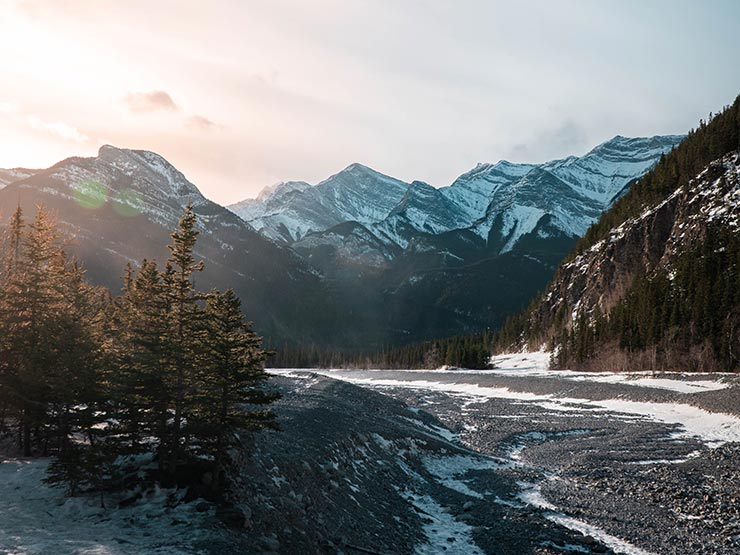



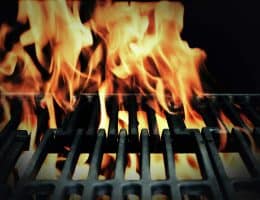

24 Comments
Bob Wen
June 23, 2021 at 6:48 amIt was good to get a glimpse of someone’s expenses at the other end of the scale (billionaires aside), both their rather Fat-FIRE situation, and being a “little” older than the stereotypical FIRE enthusiast. I think FIRE has something for everyone, no matter where they’re at in life.
Those medical costs are crazy. Not intending to be political here, but hearing about costs like this makes me appreciate more and more the system we have here in Canada.
Chrissy
June 23, 2021 at 11:41 pmHi Bob—thanks for the lovely comment! I agree that FIRE has something for everyone. That’s why I’m always thrilled to showcase anyone who’s not the average FIRE archetype.
I also try not to get political, but it’s hard not to feel sympathy for our American friends, while also feeling immense gratitude for our Canadian medical system (flawed as it may be).
steveark
June 24, 2021 at 6:03 amI know that insurance seems pretty high, but keep in mind they lost money on me. My total medical bills were higher than the insurance premium so it was still a bargain. Since this interview both my wife and I have become eligible for Medicare, government insurance. That has cut our total premiums in half, to about $8,000. In our case private insurance was very affordable but I feel for median income people having to pay that much. But also if someone retires earlier the private medical insurance is much less expensive for younger people.
Court @ Modern FImily
June 23, 2021 at 7:24 amThank you Steve for sharing your numbers! Always appreciate you commenting on our blog so it’s great to learn more about you and your story 🙂 You have totally earned the amazing life you’re living, kuddos! Your story proves that FIRE does not have to be a race if you’re enjoying the ride along the way.
And yea the medical costs in the US are just bonkers. For Americans pursuing FIRE, I hope they see your numbers and add a LOT of extra padding to their figures for the unfortunate high medical costs that can and will appear (unless they are planing to move abroad or keep some sort of part time gig just for the health benefits).
Chrissy
June 23, 2021 at 11:50 pmHi Court—ah yes, your blog is one where I’ve seen Steve’s name appear often! I wish I’d thought to visit his blog sooner than I did. He’s so thoughtful and wise. I’m seriously enjoying his posts!
I, too, marvel at what he and his wife have accomplished—and on one income to boot! It’s beyond impressive.
Regarding the medical insurance, you and I discuss this all the time, so I knew how challenging it was. But seeing the numbers in these interviews REALLY opens my eyes to what a huge issue it really is.
It’s eye-popping to see these crazy numbers. It makes me wonder how Americans can get out of this madness. Surely, it can’t continue this way forever? I sure hope it won’t, for our American family and friends’ sakes. 😕
steveark
June 24, 2021 at 6:10 amCourt, you are very kind. I don’t really feel like I earned a good life. But I do feel very fortunate. I was blessed with a good deal of natural talent in a high paying field of work. Achieving financial independence is very easy when you have a larger income. The real heroes of the FIRE movement are the median income or lower earners who still amass the investments and passive income necessary. Plus I married way out of my league. My wife of 43 years and counting is a frugal genius at controlling costs and still living well. She is responsible for all three of our kids getting merit scholarships and free four year degrees. That was a huge contribution to our ability to save and invest.
Mrs. RFL @ RichFrugalLife
June 23, 2021 at 8:05 amThank you to Steve (and Chrissy) for sharing these numbers. It’s always interesting to see other people’s spending, and I think including some boomer retirees is helpful to younger generations for planning retirement. Loved the interview, as always.
Unfortunately, the high medical expenses didn’t surprise me. My parent’s retired in their mid-50’s and they were paying around $25-$27k per year all in for insurance and out-of-pocket- costs in the last couple years before Medicare.
The American healthcare system is broken, and I hope that they make some changes before we get to that age. Luckily, the Affordable Care Act provides some subsidies that can drastically reduce insurance costs (I was quoted around $3k per year for our family of 3, if we made $50-60k income), which helps for at least some of the years.
But to your point, it is important to include a big buffer for when those costs rise with age or have a plan in place to cover the shortfall (i.e. pension income or Barista plans)
Chrissy
June 24, 2021 at 12:00 amHi Mrs. RFL—thanks so much for reading and commenting. I appreciate the added detail and context you provided. I can’t believe medical costs like these are normal. (Especially given that Steve and his wife are incredibly healthy!)
That’s a whole lot of extra income needed to cover this huge expense. Steve’s medical expenses are more than enough to cover our essential expenses. That would mean we’d need to approximately double our FIRE number! That’s painful to consider. 😭
You’re right that the system is broken. How can it be right that regular families have no choice but to save for such an enormous expense? I feel your collective pain, and wish that something more (above and beyond ACA subsidies) could be done.
steveark
June 24, 2021 at 6:17 amThe system is terrible in a lot of ways. You can get excellent care here, I have no complaints about the skill and quality of the care I received. But those costs are out of reach of many people. One of my volunteer roles is helping run a low income medical clinic. We saved two million dollars worth of emergency room costs for people last year by having a free place they could get treated rather than going to the hospital ER. But there aren’t nearly enough charitable clinics to handle all the needs plus we don’t do dental and dental care is an even bigger problem for unemployed or under employed people. People being in pain and not having anywhere to turn is a heart breaking problem in this country.
Graham @ Reverse the Crush
June 23, 2021 at 9:01 amThanks for sharing, Steve and Chrissy! This is an interesting one because of Steve’s unique FAT FIRE situation. I have interacted with Steve a few times and always appreciate his perspective. Despite his ability to spend up to 250K, seems like they are living quite lean. It looks like an awesome, worry-free retirement lifestyle with no sacrifices.
Chrissy
June 24, 2021 at 12:03 amHi Graham—your observation that Steve and his wife are actually quite lean with their spending is spot-on.
I love that about their story… even though they were high income in accumulation and are Fat FIRE now, they’re still practical, frugal people through and through.
steveark
June 24, 2021 at 6:21 amWe are trying to learn to spend more, I signed us up for 12 massages, our next door neighbor is a massage therapist! We typically only get one or two a year at most in the past so we’ll each get six now. But the fact is we pretty much do what we want now and it just isn’t that expensive. I’m working on planning a road trip from Arkansas to Alaska. That isn’t possible yet but if the border opens before winter we might squeeze in a 14,000 mile road trip this year.
David @ Filled With Money
June 23, 2021 at 4:52 pmIt’s great to see you on here, Steve!!
Eight job offers out of college… I had like 4 that I fought VERY hard for, haha. It must have been nice to be so wanted!
I can’t imagine what fatFIRE feels like. I live on like $20k per year, I can’t imagine what spending $250k feels like. One day, I hope to get there.
Chrissy
June 24, 2021 at 12:07 amHi David—wow, it seems like everyone knows Steve! I’m so happy I had the opportunity to interview him!
Steve has clearly led a very successful life, right from the start. It’s a motivational, inspiring story for sure!
I, too, can only imagine what Fat FIRE would be like! Given how little you spend, $75k per year might be Fat FIRE for you—so you may be a lot closer than you think!
steveark
June 24, 2021 at 6:28 amHey David, it wasn’t that I was that special, I only had a 2.7 GPA (I was very intelligent but also very lazy) but it was the height of the oil and chemical company’s fortunes and there weren’t many chemical engineering graduates in any given year. We had 120 companies come to our university placement center to interview the four of us graduating at midterm. So that year everybody had their pick of jobs. Ironically only one semester later the bottom fell out of the job market and engineers struggled to even get one offer. It was characteristic of my whole life that I got supremely lucky to have graduated at just the right time. I’ve been given way too much credit for things I’ve done that were 99% good luck.
steveark
June 24, 2021 at 6:33 amDavid, I can’t imagine spending $250K in a year either. I doubt I ever will. The years I made that kind of money we saved most of what we earned. Again that is just the roll of the dice. I picked chemical engineering and made a lot of money. My brilliant brother picked chemistry and while he’s done very well and also retired slightly early he made significantly less money just because of a slightly different college major. As far as getting there, you are hanging around with the right people to do that. Most all of the bloggers in this space are focused and dedicated, I’m probably the least accomplished because of the fact so much of my results are due to that luck thing.
Arthur DuBois
July 8, 2021 at 11:07 pmNot bad at all out there in Arkansas! This piece just goes to show that where you choose to live has one of the biggest effects on your income out of all factors. We appreciate you providing clarity to this and sharing some of your personal information. I’ll be sure to follow along with your blog as you publish new blogs!
Chrissy
July 8, 2021 at 11:11 pmHi Arthur—thanks so much for reading and commenting. I’m thrilled to hear that you enjoyed Steve’s interview. There are A LOT more interviews in the works. Check back every other week for a new one!
Ana
July 9, 2021 at 7:02 amAnother great interview, Chrissy! You’re right– it’s so nice to see the variety in the demographics you’re pulling together in this series. Steve and his wife have built a remarkable life for themselves in a small town. Love the idea of 800 acres of wooded wetlands while sipping on that morning coffee!
Thank you for a glimpse of FatFIRE and what a comfortable retirement looks like.
Chrissy
July 9, 2021 at 9:11 pmHi Ana—thank you for the kind words! It has been such a fun experience to read and share these interviews. I also love the variety in demographics and experiences. Steve lives an enviable life, and I truly enjoyed learning more about his FatFIRE lifestyle. I hope that we also one day enjoy such a comfortable, fulfilling retirement!
Mrs FDU
August 5, 2021 at 5:18 pmThanks for sharing this interview Chrissy – as always, so much insight!
Living somewhere low cost when retired sounds like the way to go.
Like you, the US medical bills always amaze me. I feel so lucky living in Australia.
Great work Steve on building a nest egg that you can now enjoy, stress free!
Steveark
August 5, 2021 at 6:49 pmThanks Mrs. FDU! Yes, our medical system is weird. It’s fine for people with money, like me. But not good for those with less. I volunteer at a charity that provides free care for low income families. Even basic dental care is out of reach for many. That’s nonsensical in a rich country.
Chrissy
August 9, 2021 at 4:46 pmHi Steve—it’s wonderful that you’re able to put your time towards such an important cause. I hope, once my husband retires and the kids are out of the house, I’ll be able to do the same.
Chrissy
August 9, 2021 at 4:43 pmHi Mrs. FDU—thanks so much for popping over to read Steve’s interview. Each one of these has been so interesting and eye-opening for me.
The medical insurance issue is a big one in the US. We have our issues in Canada too, but I’m grateful that the cost of medical care is generally not a concern.